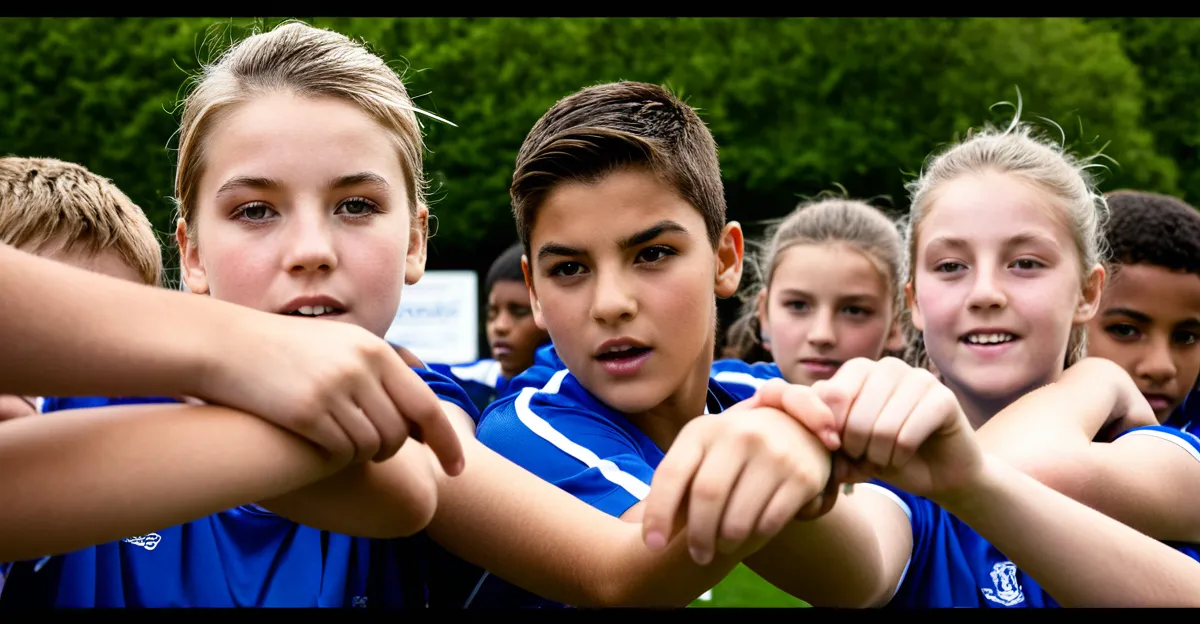Government Support and Policy Initiatives for School Sports
National government funding and support form the backbone of sports funding in schools across the UK. Key among these is the Primary PE and Sport Premium, a targeted financial grant introduced to enhance the quality of physical education and sports provision in primary schools. This initiative ensures that schools receive dedicated resources to improve facilities, hire qualified coaches, and introduce new sports activities. The grant’s design stresses accountability, with schools required to report on spending impacts, encouraging strategic use of funds to maximize student participation and physical health benefits.
UK education policies incorporate government initiatives in school sports by embedding sport as a priority within the broader educational agenda. These policies emphasize inclusivity, aiming to engage children of all abilities through diverse sporting opportunities. Sports funding in schools, supported by government initiatives, directly affects curriculum delivery and extracurricular programming. For example, policy guidelines recommend minimum weekly time allocations for physical education, guaranteeing consistent exposure to physical activity.
Have you seen this : The Evolution of UK Sports: How Has It Shaped Modern Culture?
Moreover, national sports strategies influence schools by linking government vision and school-level implementation. Strategies outline objectives such as increasing youth engagement in sports to tackle health inequalities and promote lifelong active lifestyles. Consequently, schools align their curriculum and extracurricular offerings with these strategies, ensuring quality and cohesion in sports education. This comprehensive approach fosters sustainable development of sports within the school environment supported by structured funding and clear governmental commitment.
Integration of Sports into the School Curriculum
The PE curriculum UK is carefully structured to provide comprehensive physical education across all key stages. It mandates regular lessons aimed at developing fundamental skills, sports techniques, and promoting lifelong physical activity. This curriculum balances skill acquisition, fitness, and knowledge about health, ensuring pupils receive a well-rounded physical education experience.
Also read : How Is the UK Supporting Paralympic Athletes?
Physical education requirements designate PE as a compulsory subject for all students, which significantly increases participation rates by guaranteeing exposure to sport regardless of individual interest. The compulsory nature ensures every child benefits from regular physical activity, positively impacting physical health and social development. Schools follow government guidelines that detail a minimum weekly time allocation for PE, maintaining consistency throughout the academic year.
Adaptations within the PE curriculum accommodate diverse ages and abilities, making sports accessible and enjoyable for all pupils. For younger children, lessons focus on basic motor skills and playful engagement, while older students experience more structured, sport-specific training and fitness education. Special provisions also address inclusive education mandates, ensuring children with disabilities or varying skill levels can participate fully in school sports.
By embedding sports into the academic timetable, the PE curriculum UK fosters an environment where physical education and personal development go hand in hand, supporting broad participation and encouraging positive attitudes toward lifelong fitness.
Extracurricular Sports Clubs and Activities
Extracurricular sports UK play a vital role in extending physical activity beyond the classroom. After-school sports clubs provide diverse opportunities for students to engage in team and individual sports, such as football, netball, athletics, and dance. These clubs enhance skills learned in lessons and foster social interaction, teamwork, and a deeper enthusiasm for sport. Popularity varies by region and school size, but overall participation shows steady growth, reflecting a broader governmental push to embed sports in all areas of students’ lives.
Inclusion is a central consideration in extracurricular sports UK programs. Schools implement strategies to encourage involvement from students with different abilities, backgrounds, and interests. This includes adapted activities for children with disabilities, mixed-ability teams, and initiatives that specifically target less active or socially disadvantaged groups. These efforts align with wider government initiatives in school sports, which emphasize inclusivity and equal access.
Collaboration with local sports clubs and community coaching is another cornerstone of successful extracurricular sports. Schools increasingly partner with local organizations to benefit from specialized coaching expertise and wider resources. These partnerships facilitate progression pathways for talented students while enriching school sports offerings. Regular visits from community coaches often motivate students and introduce them to sports beyond the school environment, promoting continued physical activity and skill development.
Overall, extracurricular sports UK activities complement the PE curriculum UK by providing extended, flexible, and varied sporting experiences, crucial for nurturing lifelong active lifestyles.
Incentives and Recognition Schemes
Recognition plays a pivotal role in fostering student motivation for sports within UK schools. Implementing sports achievement awards such as certificates, badges, and trophies encourages students to commit to regular participation and strive for personal improvement. Such awards celebrate effort, skill development, and teamwork, reinforcing positive behaviors and enhancing the overall sports culture in schools.
Inter-school competitions and sports days form a critical part of participation incentives by providing students with tangible goals and a platform for showcasing their abilities. These events generate excitement and camaraderie, motivating students who might otherwise be less engaged. Schools often tailor these activities to include various skill levels, ensuring inclusive competition that boosts confidence and a sense of achievement.
To further increase engagement, many schools have introduced schemes specifically targeting less active students. Incentive programs may include goal-setting with rewards for attendance or improvement, fun challenges, or peer recognition systems. These measures align with broader government initiatives in school sports aimed at increasing accessibility and promoting lifelong physical activity.
Together, these student motivation for sports strategies contribute to higher participation rates, a positive school environment, and lasting enthusiasm for physical education.
Partnerships with External Sports Organizations
Collaborations through school sports partnerships significantly enhance sports provision in UK schools by connecting educational institutions with experienced organizations. These partnerships commonly involve national bodies such as the Football Association (FA) and England Athletics, as well as numerous local community sports clubs. Schools benefit from expert knowledge, coaching excellence, and additional resources, which elevate the quality and diversity of school sports activities.
Access to specialist coaches via these partnerships is vital. Coaches bring advanced training methods and inspire students by sharing their expertise and passion for sport. Often, athletes visit schools to motivate pupils, providing practical demonstrations and personal success stories that encourage participation. This athlete engagement directly supports government initiatives in school sports aimed at increasing youth involvement and enthusiasm.
Effective sports organization collaboration frequently includes structured programs where local clubs and schools jointly run training sessions or competitive events. These initiatives create clear pathways for talent development and community engagement, ensuring students can progress from school-level participation to more competitive levels if they wish. Such partnerships also support inclusivity by adapting activities to accommodate diverse student needs.
Successful collaborations showcase a model where schools leverage external expertise to enhance their sports offerings while aligning with wider UK education policies promoting physical activity and wellbeing. The combined efforts of schools and external sports bodies strengthen the national framework for sports funding in schools and contribute to a holistic, sustainable approach to youth sports development.
Investment in Sports Facilities and Resources
Investment in school sports facilities across the UK has seen significant progress, reflecting the recognition that high-quality infrastructure is essential for effective sports education. Modern school sports facilities include well-maintained gyms, multi-use halls, outdoor pitches, athletics tracks, and specialised areas for activities like gymnastics and dance. These improvements directly enhance the scope and quality of sports in schools, offering safe, accessible spaces that encourage all students to engage in physical activity.
The availability of up-to-date sports infrastructure UK supports a wider variety of sports and allows schools to cater to diverse interests and abilities. For example, schools equipped with indoor pools or climbing walls can provide unique opportunities beyond traditional team sports, fostering enthusiasm and broadening pupils’ skills. Such resources also aid in meeting physical education requirements by enabling schools to deliver a comprehensive PE curriculum that is varied and inclusive.
Investment also extends to providing schools with modern equipment, including balls, racquets, fitness machines, and technology for performance tracking. Access to this school sports facilities equipment helps maintain student motivation, allowing progression in skill development and encouraging healthier lifestyles. Moreover, quality facilities reduce barriers to participation by ensuring that all pupils can access consistent and enjoyable sporting environments.
Research shows that enhanced facilities and equipment correlate with higher student physical activity statistics, as students are more likely to participate when engaging environments are present. Schools that prioritize investment in their sports infrastructure often report greater enthusiasm for extracurricular sports activities and improved overall student wellbeing, illustrating the pivotal role of resources in nurturing lifelong active habits.







